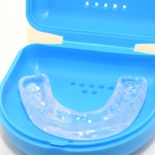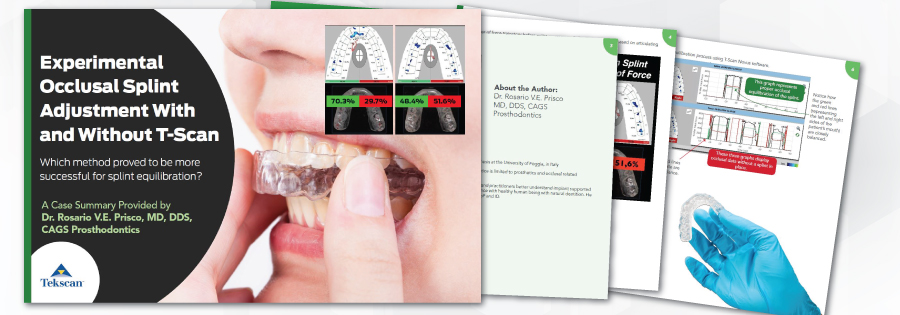T-Scan™ Data Helps to Address Occlusal Disorders in Splint Therapy
Splint therapy and orthotic devices are commonly used to treat occlusal disorders, which are often difficult to diagnose.
 Digital occlusal analysis helps dentists identify occlusal imbalances in patients being fitted for splints
Digital occlusal analysis helps dentists identify occlusal imbalances in patients being fitted for splints
T-Scan™’s real-time bite force and measurement data can help the dentist analyze the patient’s occlusion before, during and after splint therapy. Digital information makes it easier identify areas that need adjustment in order to ensure patient comfort, a balanced appliance, and a harmonized occlusal scheme.
- Streamline the treatment process from initial exam to final adjustment
- Eliminate lateral interferences and enhance canine guidance
- Educate the patient on the cause and effect of their occlusal disorder
- Increase case acceptance
Tekscan offers dentists training opportunities and courses to learn more about utilizing T-Scan to treat patients with TMD.
Download The Splint/Orthotic Therapy Application Brief
Also, Please check out this case study, Experimental Occlusal Splint Adjustment With and Without T-Scan
You may access this case study by clicking the links below
Download Low Resolution (3MB)
Recommended Use by Continuing Education Group
The Dawson Academy, The Las Vegas Institute, and The Pankey Institute have protocols regarding the use T-Scan in clinical applications, including orthotic/splint therapy.
Articulating paper is great to mark teeth, but those marks
have no bearing on sequence, timing or force. To be able to test
forces on new ceramics, complete dentures, implants, or even
splints is invaluable.-Dr. John Nosti, DMD, FAGD, FACE, FICOI

